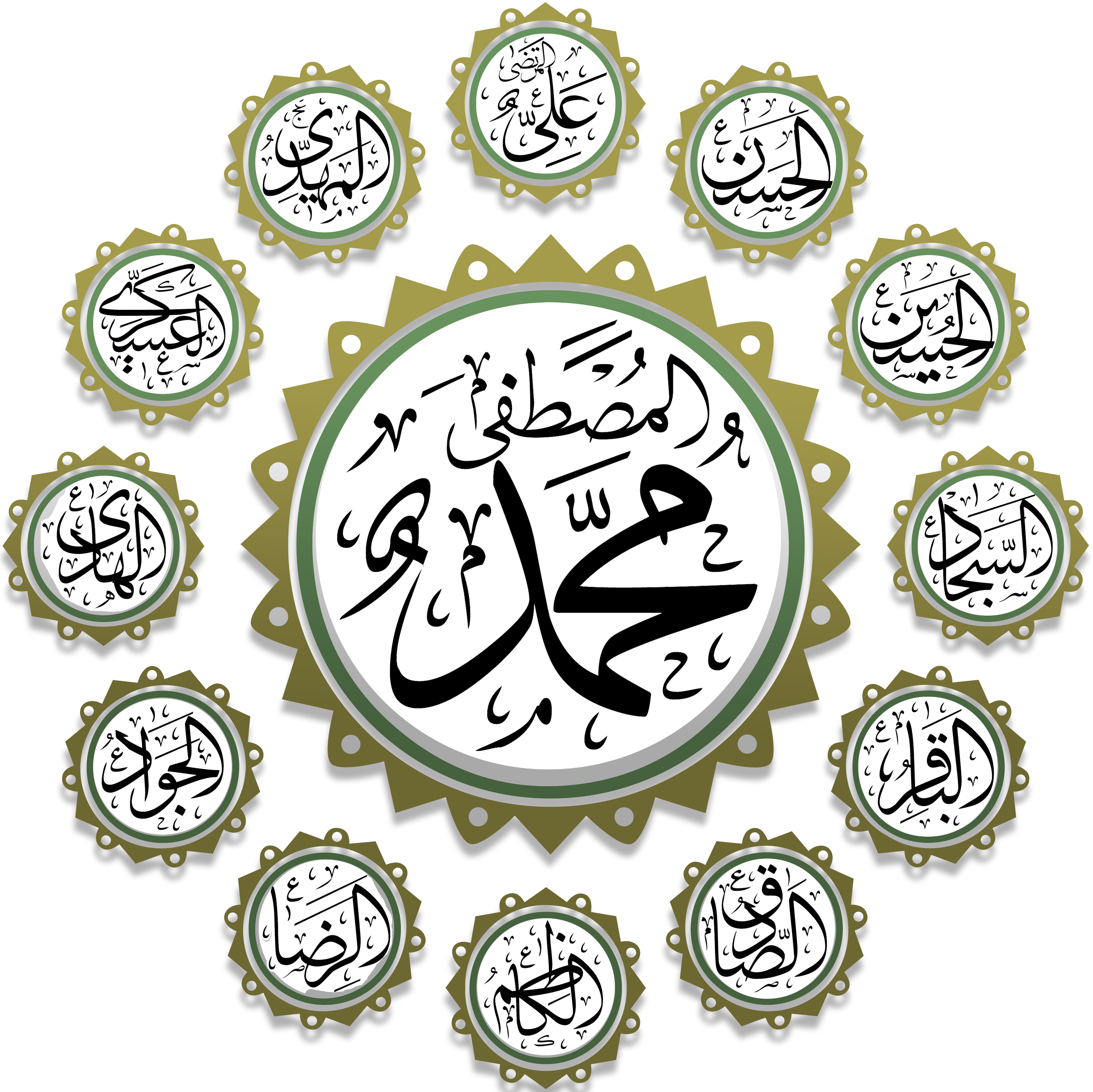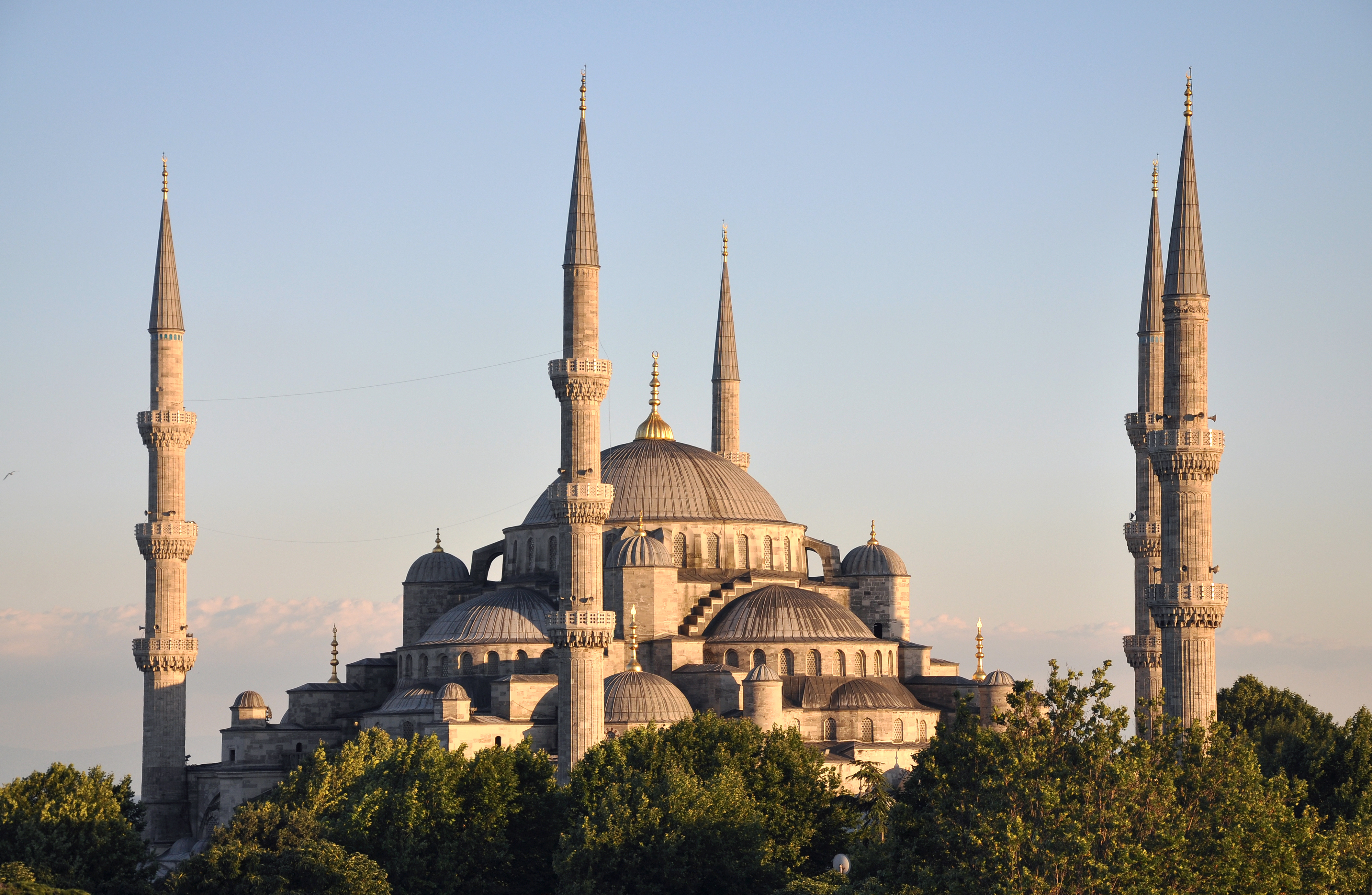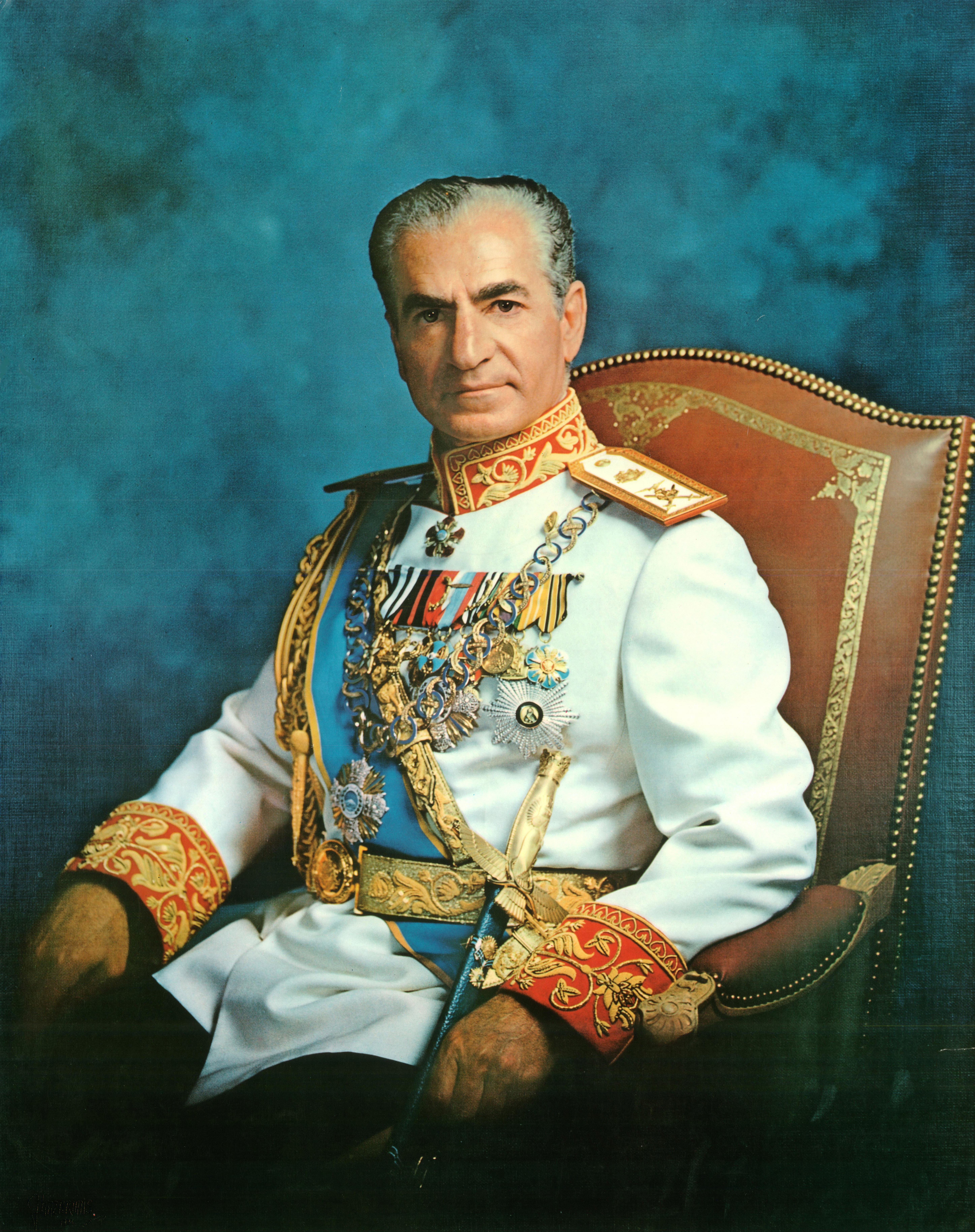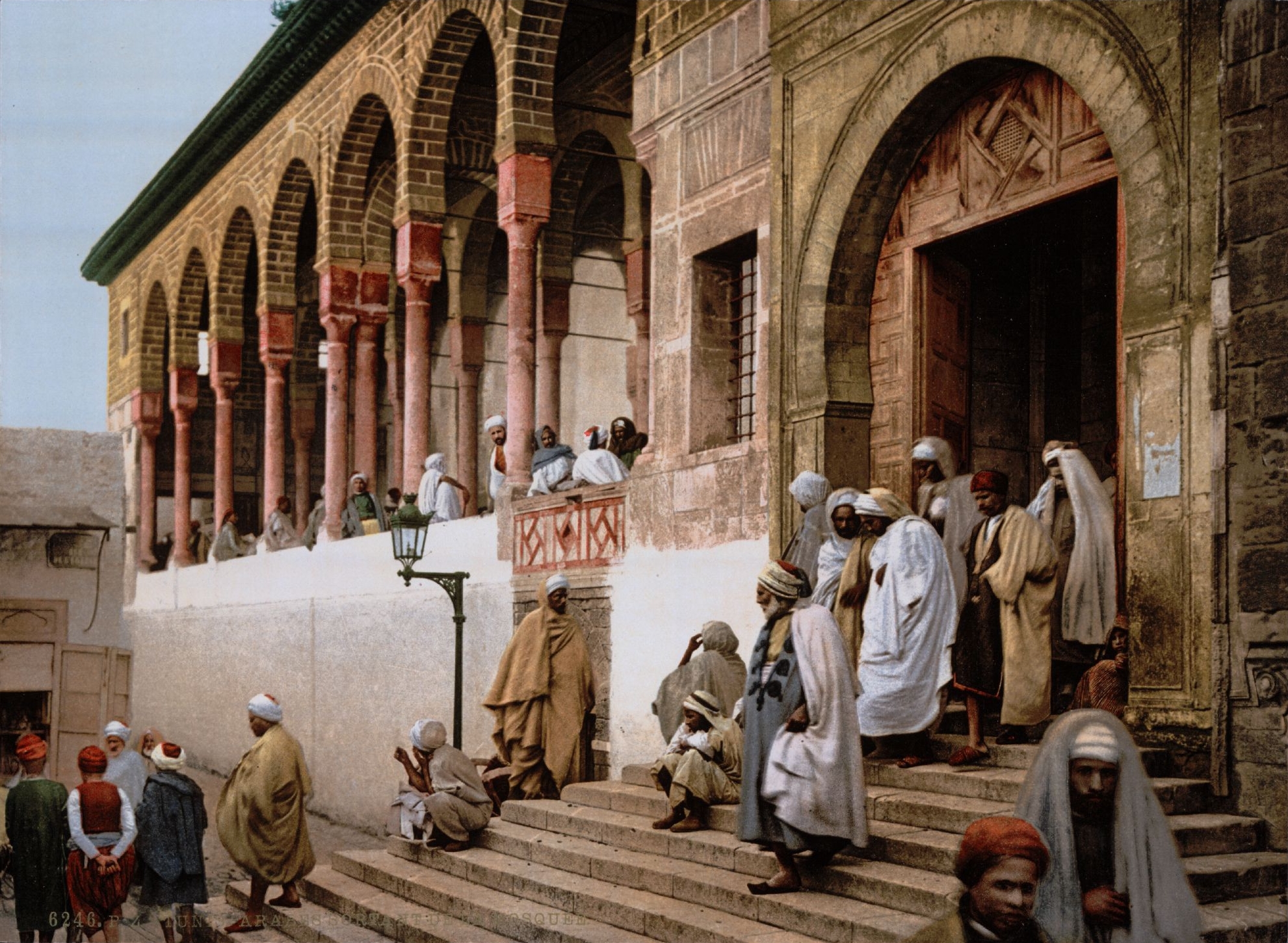|
Imam Hasan Al-Askari Mosque
The Imam Hasan al-Askari Mosque () is a place of worship for the Twelver Shi'ites that is located in Qom, Iran. It is named for Hasan al-Askari, who is the 11th Imam of the Ahl al-Bayt, Ahlulbayt and the father of the 12th Imam in Shi'ite traditions. This place of worship is number 1312 in the list of national heritage monuments of Iran. History The mosque was built in the 9th century by Ahmad ibn Ishaq Ash'ari Qomi, an Ash'ari theologian and Shi'ite narrator of hadith. As centuries progressed, the mosque was gradually rebuilt and renovated into a larger form. The Safavids renovated the mosque in 1717, but the only trace of this renovation is the southern loggia of the mosque. During the Qajar period, a basement and a hall was built in the western side of the mosque in 1869. Nine years later, a hall and a basement were added in the western corner of the mosque. After the end of the Iranian Revolution, a new reconstruction plan was developed by Mohammad-Reza Golpaygani. The new mos ... [...More Info...] [...Related Items...] OR: [Wikipedia] [Google] [Baidu] |
Twelver Shi'ite
Twelver Shīʿīsm ( ar, ٱثْنَا عَشَرِيَّة; '), also known as Imāmīyyah ( ar, إِمَامِيَّة), is the largest branch of Shīʿa Islam, comprising about 85 percent of all Shīʿa Muslims. The term ''Twelver'' refers to its adherents' belief in twelve divinely ordained leaders, known as the Twelve Imams, and their belief that the last Imam, Imam al-Mahdi, lives in Occultation and will reappear as ''The promised Mahdi'' ( ar, المهدي المنتظر). According to the Shīʿa tradition, the Mahdi's tenure will coincide with the Second Coming of Jesus (ʿĪsā), who, along with Mahdi, would kill the Dajjal. Twelvers believe that the Twelve Imams are the spiritual and political successors to the Islamic prophet Muhammad. According to the theology of Twelvers, the Twelve Imams are exemplary human individuals who not only rule over the Muslim community (''Ummah'') with justice, but are also able to preserve and interpret the Islamic law (''sharīʿa' ... [...More Info...] [...Related Items...] OR: [Wikipedia] [Google] [Baidu] |
Hadith
Ḥadīth ( or ; ar, حديث, , , , , , , literally "talk" or "discourse") or Athar ( ar, أثر, , literally "remnant"/"effect") refers to what the majority of Muslims believe to be a record of the words, actions, and the silent approval of the Islamic prophet Muhammad as transmitted through chains of narrators. In other words, the ḥadīth are transmitted reports attributed to what Muhammad said and did. Hadith have been called by some as "the backbone" of Islamic civilization, J.A.C. Brown, ''Misquoting Muhammad'', 2014: p.6 and for many the authority of hadith as a source for religious law and moral guidance ranks second only to that of the Quran (which Muslims hold to be the word of God revealed to Muhammad). Most Muslims believe that scriptural authority for hadith comes from the Quran, which enjoins Muslims to emulate Muhammad and obey his judgements (in verses such as , ). While the number of verses pertaining to law in the Quran is relatively few, hadith are ... [...More Info...] [...Related Items...] OR: [Wikipedia] [Google] [Baidu] |
Mosque Buildings With Domes
A mosque (; from ar, مَسْجِد, masjid, ; literally "place of ritual prostration"), also called masjid, is a place of prayer for Muslims. Mosques are usually covered buildings, but can be any place where prayers ( sujud) are performed, including outdoor courtyards. The first mosques were simple places of prayer for Muslims, and may have been open spaces rather than buildings. In the first stage of Islamic architecture, 650-750 CE, early mosques comprised open and closed covered spaces enclosed by walls, often with minarets from which calls to prayer were issued. Mosque buildings typically contain an ornamental niche ('' mihrab'') set into the wall that indicates the direction of Mecca ('' qiblah''), ablution facilities. The pulpit ('' minbar''), from which the Friday ( jumu'ah) sermon ('' khutba'') is delivered, was in earlier times characteristic of the central city mosque, but has since become common in smaller mosques. Mosques typically have segregated spaces for ... [...More Info...] [...Related Items...] OR: [Wikipedia] [Google] [Baidu] |
Mosques In Iran
In 2015 it was estimated, as per official statistics, that there are 47,291 Shiite mosques and 10,344 Sunni mosques in Iran. List of mosques in Iran This is a list of mosques in Iran. Ardabil Province * Jome mosque * Jameh Mosque of Germi * Jameh Mosque of Namin East Azerbaijan Province * Jameh Mosque of Ahar * Jameh Mosque of Tabriz * Jameh Mosque of Sarab * Hajj Safar Ali Mosque * Saheb-ol-Amr Mosque * Jameh Mosque of Marand * Jameh Mosque of Mehrabad * Blue Mosque, Tabriz * Stone Tark Mosque * Mirpanj Mosque Gilan Province * Hajj Samad Khan Mosque * Chahar Padshahan Golestan Province * Jameh Mosque of Gorgan Fars Province * Jameh Mosque of Atigh * Vakil Mosque * Nasir-ol-molk Mosque * Jameh Mosque of Lar * Jameh Mosque of Kabir Neyriz * Jameh Mosque of Jahrom * Jameh Mosque of Darab * Jameh Mosque of Arsanjan Hamadan Province * Jameh Mosque of Sarabi Hormozgan Province * Malek bin Abbas Mosque * Jameh Mosque of Bastak * Jameh ... [...More Info...] [...Related Items...] OR: [Wikipedia] [Google] [Baidu] |
Islam In Iran
The Muslim conquest of Persia () led to the end of the Sasanian Empire and triggered the decline of Zoroastrianism among the Iranian peoples due to large-scale persecution by Arab Muslims under the newly-arrived Rashidun Caliphate. Since its establishment after the 7th-century conquest, Islam has remained the official religion of Iran (also known as "Persia") except for during a short period after the Mongol invasions and subsequent establishment of the Ilkhanate in the 13th century. The 1979 Islamic Revolution brought an end to the historic Persian monarchy, after which Iran emerged as an Islamic republic. Before the Muslim conquest, mainland Iranians primarily adhered to the Iranian religion of Zoroastrianism; there were also large and thriving Jewish and Christian communities, especially in the territories of northwestern, western, and southern Iran—mainly Caucasian Albania, Asoristan, Persian Armenia, and Caucasian Iberia. A significant number of Iranian peoples also ad ... [...More Info...] [...Related Items...] OR: [Wikipedia] [Google] [Baidu] |
Mohammad-Reza Golpaygani
Grand Ayatollah Mohammad-Reza Golpaygani (March 20, 1899 – December 9, 1993) was an Iranian Shia Muslim and '' marja''' scholar and was born in 1899 in Gogad village near the city of Golpaygan, Iran. He was taught preliminary studies by his father, Mohammad Bagher. At the age of 9, his father died, and he moved to Golpaygan to continue his studies. He was one of the highest-ranking Islamic clergies to participate in the Islamic Revolution of 1979, and a one-time serious contender to succeed Ruhollah Khomeini in the 1989 Iranian Supreme Leader election. However, his candidacy was voted down by the Assembly of Experts, in favor of the eventual successor, Ali Khamenei. Family and early life Ayatollah Seyyed Mohammad-Reza Golpayegani's father Sayyed Muhammad Bagher was a great scholar who made sure his son learned primary education and religious sciences under great masters. At the age of 20, he moved to Arak to study under Abdul-Karim Ha'eri Yazdi and became one of his most n ... [...More Info...] [...Related Items...] OR: [Wikipedia] [Google] [Baidu] |
Iranian Revolution
The Iranian Revolution ( fa, انقلاب ایران, Enqelâb-e Irân, ), also known as the Islamic Revolution ( fa, انقلاب اسلامی, Enqelâb-e Eslâmī), was a series of events that culminated in the overthrow of the Pahlavi dynasty under Shah Mohammad Reza Pahlavi, and the replacement of his government with an Islamic republic under the rule of Ayatollah Ruhollah Khomeini, a leader of one of the factions in the revolt. The revolution was supported by various leftist and Islamist organizations. After the 1953 Iranian coup d'état, Pahlavi had aligned with the United States and the Western Bloc to rule more firmly as an authoritarian monarch. He relied heavily on support from the United States to hold on to power which he held for a further 26 years. This led to the 1963 White Revolution and the arrest and exile of Ayatollah Khomeini in 1964. Amidst massive tensions between Khomeini and the Shah, demonstrations began in October 1977, developing into a campaig ... [...More Info...] [...Related Items...] OR: [Wikipedia] [Google] [Baidu] |
Qajar
Qajar Iran (), also referred to as Qajar Persia, the Qajar Empire, '. Sublime State of Persia, officially the Sublime State of Iran ( fa, دولت علیّه ایران ') and also known then as the Guarded Domains of Iran ( fa, ممالک محروسه ایران '), was an Iranian state ruled by the Qajar dynasty, which was of Turkic origin,Cyrus Ghani. ''Iran and the Rise of the Reza Shah: From Qajar Collapse to Pahlavi Power'', I. B. Tauris, 2000, , p. 1William Bayne Fisher. ''Cambridge History of Iran'', Cambridge University Press, 1993, p. 344, Dr Parviz Kambin, ''A History of the Iranian Plateau: Rise and Fall of an Empire'', Universe, 2011, p.36online edition specifically from the Qajar tribe, from 1789 to 1925.Abbas Amanat, ''The Pivot of the Universe: Nasir Al-Din Shah Qajar and the Iranian Monarchy, 1831–1896'', I. B. Tauris, pp 2–3; "In the 126 years between the fall of the Safavid state in 1722 and the accession of Nasir al-Din Shah, the Qajars evolved from a s ... [...More Info...] [...Related Items...] OR: [Wikipedia] [Google] [Baidu] |
Safavids
Safavid Iran or Safavid Persia (), also referred to as the Safavid Empire, '. was one of the greatest Iranian empires after the 7th-century Muslim conquest of Persia, which was ruled from 1501 to 1736 by the Safavid dynasty. It is often considered the beginning of modern Iranian history, as well as one of the gunpowder empires. The Safavid Shāh Ismā'īl I established the Twelver denomination of Shīʿa Islam as the official religion of the empire, marking one of the most important turning points in the history of Islam. An Iranian dynasty rooted in the Sufi Safavid order founded by Kurdish sheikhs, it heavily intermarried with Turkoman, Georgian, Circassian, and Pontic GreekAnthony Bryer. "Greeks and Türkmens: The Pontic Exception", ''Dumbarton Oaks Papers, Vol. 29'' (1975), Appendix II "Genealogy of the Muslim Marriages of the Princesses of Trebizond" dignitaries and was Turkish-speaking and Turkified. From their base in Ardabil, the Safavids established control over ... [...More Info...] [...Related Items...] OR: [Wikipedia] [Google] [Baidu] |
Ash'ari
Ashʿarī theology or Ashʿarism (; ar, الأشعرية: ) is one of the main Sunnī schools of Islamic theology, founded by the Muslim scholar, Shāfiʿī jurist, reformer, and scholastic theologian Abū al-Ḥasan al-Ashʿarī in the 9th–10th century. It established an orthodox guideline based on scriptural authority, rationality, and theological rationalism. Al-Ashʿarī established a middle way between the doctrines of the Aṯharī and Muʿtazila schools of Islamic theology, based both on reliance on the sacred scriptures of Islam and theological rationalism concerning the agency and attributes of God. Ashʿarism eventually became the predominant school of theological thought within Sunnī Islam, and is regarded as the single most important school of Islamic theology in the history of Islam. The disciples of the Ashʿarī school are known as Ashʿarites, and the school is also referred to as the Ashʿarite school, which became one of the dominant theologica ... [...More Info...] [...Related Items...] OR: [Wikipedia] [Google] [Baidu] |
Iran
Iran, officially the Islamic Republic of Iran, and also called Persia, is a country located in Western Asia. It is bordered by Iraq and Turkey to the west, by Azerbaijan and Armenia to the northwest, by the Caspian Sea and Turkmenistan to the north, by Afghanistan and Pakistan to the east, and by the Gulf of Oman and the Persian Gulf to the south. It covers an area of , making it the 17th-largest country. Iran has a population of 86 million, making it the 17th-most populous country in the world, and the second-largest in the Middle East. Its largest cities, in descending order, are the capital Tehran, Mashhad, Isfahan, Karaj, Shiraz, and Tabriz. The country is home to one of the world's oldest civilizations, beginning with the formation of the Elamite kingdoms in the fourth millennium BC. It was first unified by the Medes, an ancient Iranian people, in the seventh century BC, and reached its territorial height in the sixth century BC, when Cyrus the Gr ... [...More Info...] [...Related Items...] OR: [Wikipedia] [Google] [Baidu] |





